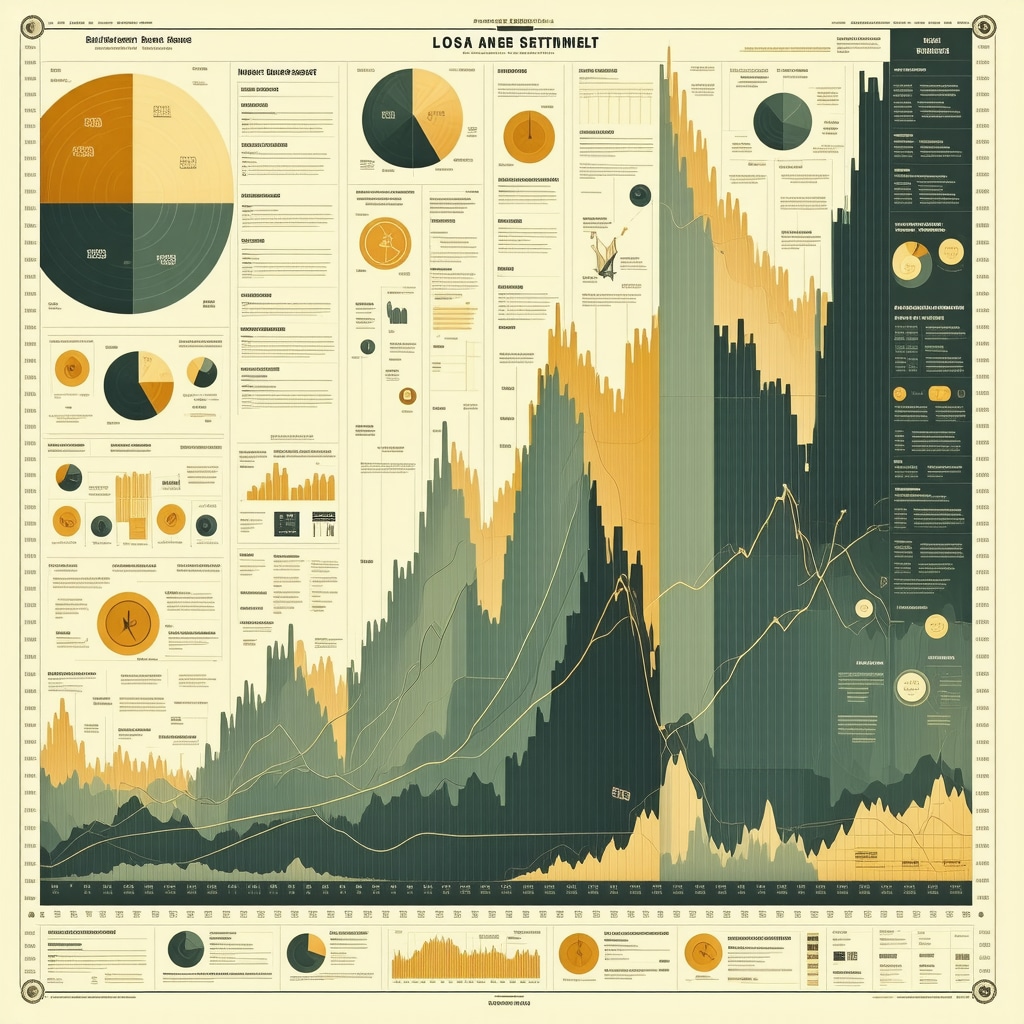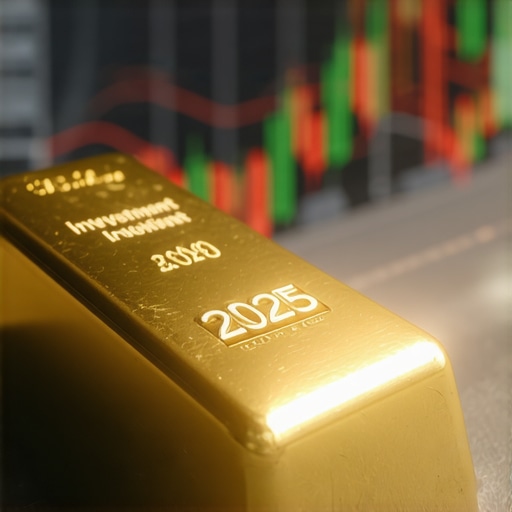When Markets Sputter, Gold Often Glitters Brighter
Imagine waking up one morning to headlines screaming about stock market chaos, geopolitical tensions, or inflation rates playing hopscotch. Panic? Maybe. But seasoned investors? They reach for their golden lifebuoy—yes, gold. It’s that shimmering asset that’s been quietly stealing the show since ancient times, proving time and again it’s not just a pretty metal but a fortress in financial storms.
Why Does Gold Shine When Everything Else Sinks?
Gold’s allure as a hedge against market uncertainty isn’t just folklore; it’s backed by history and hard data. When stocks tumble or currencies wobble, gold tends to hold its value or even appreciate. This phenomenon is partly because gold isn’t tied to any single economy or government policy, making it a global safe haven. Plus, unlike paper currency, gold can’t be printed or devalued at will.
Is Gold Really the Ultimate Hedge, or Just a Glittering Myth?
Here’s the million-dollar question: Is gold truly the panacea for market jitters? Not always. While it often provides a cushion during inflation spikes or economic downturns, its price can be volatile too, influenced by factors like central bank purchases, jewelry demand, and geopolitical events. But for investors with patience and strategy, it remains a compelling piece of the portfolio puzzle.
Smart Ways to Embrace Gold in Your Investment Strategy
So, how do you actually wield gold to shield your assets? Physical gold—bars, coins, or bullion—offers tangible security, but requires careful storage and trusted dealers. For those seeking liquidity and ease, gold ETFs or mutual funds are viable alternatives. And don’t overlook gold mining stocks, which can offer leveraged exposure but with added risk.
Curious about diving deeper? Explore how gold acts as a hedge in uncertain times for a comprehensive look at strategies tailored for today’s market.
Gold’s Role in the Bigger Economic Picture
Beyond individual portfolios, central banks’ gold purchases significantly sway market dynamics and prices. Understanding this interplay can give investors an edge, as noted by the World Gold Council, which highlights gold’s multifaceted role as a monetary asset and investment vehicle (source).
Have you ever considered how gold fits into your financial resilience plan? Share your experiences or questions below — sometimes the best insights come from the collective wisdom of fellow readers.
Diving Deeper: Leveraging Gold’s Unique Market Position in 2025
In today’s increasingly interconnected and volatile financial environment, gold’s role as a strategic asset extends far beyond simple safe-haven status. Investors who grasp the nuanced interplay between macroeconomic shifts and gold’s market behavior can better position themselves to capitalize on its potential. For example, understanding how fluctuations in real interest rates or currency valuations impact gold can significantly enhance timing and allocation decisions.
Seasoned investors often combine physical gold holdings with financial instruments like gold ETFs and mining stocks to create a diversified exposure that balances liquidity and risk. This layered approach allows for flexibility in reacting to market signals while maintaining the protective qualities that physical gold provides.
How Do Central Bank Gold Purchases Shape Investor Strategies in 2025?
Central banks remain pivotal players in the gold market, with their buying patterns sending ripples through global prices and investor sentiment. Their motivations—ranging from currency reserve diversification to geopolitical hedging—signal broader economic undercurrents that can influence market direction. Investors attuned to these movements gain an anticipatory advantage, adjusting portfolios ahead of potential price shifts.
As detailed by the World Gold Council, central bank purchases have contributed to sustained upward pressure on gold prices in recent years, underscoring the metal’s enduring appeal as a strategic reserve asset. Staying informed on these institutional activities is crucial for crafting responsive investment strategies.
Balancing Risk and Reward: Gold Mining Stocks Versus Physical Gold
While physical gold offers stability, mining stocks present opportunities for amplified gains linked to operational performance and commodity price movements. However, they also come with company-specific risks such as management effectiveness, geopolitical exposure, and operational disruptions. Investors must carefully analyze these factors to integrate mining stocks effectively within their portfolios.
Exploring how to invest in gold mining stocks can provide essential insights into mitigating risks while harnessing growth potential.
Integrating Gold Into a Holistic Investment Framework
Incorporating gold requires alignment with overall financial goals and risk tolerance. Dynamic allocation models that adjust gold exposure based on market volatility, inflation expectations, and geopolitical risks can optimize portfolio resilience. Additionally, tax implications and liquidity needs should be factored into decisions regarding the form of gold investment.
For those looking to refine their gold investment approach, resources like best gold investment strategies to hedge inflation risks in 2025 offer practical guidance tailored to contemporary economic realities.
What’s your experience with balancing physical gold and financial gold instruments in volatile markets? Share your thoughts or questions below to enrich our collective understanding and help fellow investors navigate these complexities.
Decoding Central Bank Gold Movements: A Strategic Compass for Sophisticated Investors
In the labyrinth of global finance, central banks operate not merely as custodians of national reserves but as influential architects shaping gold’s market trajectory. Their acquisition strategies—often shrouded in discretion—are signals of broader monetary policy shifts, currency reserve diversification, and geopolitical hedging. For advanced investors, decoding these signals requires a mastery of macroeconomic analytics and geopolitical intelligence.
Central banks’ gold purchases reflect a strategic pivot away from reliance on fiat currencies vulnerable to inflation and political risk, towards a tangible asset with intrinsic value. This trend, extensively documented by the World Gold Council, emphasizes how institutional buying creates sustained upward pressure on gold prices, influencing market sentiment and liquidity conditions globally.
Leveraging this insight, investors can anticipate shifts in gold’s pricing dynamics by monitoring central bank disclosures and geopolitical developments. This proactive stance allows for timely portfolio adjustments, optimizing entry and exit points in both physical and financial gold instruments.
What Advanced Metrics Can Investors Use to Predict Central Bank Gold Buying Patterns?
Beyond surface-level market data, sophisticated investors employ a combination of economic indicators such as real interest rates, currency reserve compositions, and geopolitical risk indices to forecast central bank gold activity. Tools like the Global Economic Policy Uncertainty Index and currency strength metrics provide nuanced context that, when synthesized, reveal probable trajectories of institutional gold demand.
Moreover, analyzing the balance sheets and foreign reserve reports of key economies offers direct clues. For example, a sustained increase in non-dollar reserves often correlates with increased gold acquisition. Utilizing machine learning algorithms on historical data sets further refines predictive accuracy, enabling investors to position their portfolios with greater confidence.
Mining Stocks vs. Physical Gold: Crafting a Risk-Calibrated Exposure
While physical gold embodies stability and liquidity, mining stocks introduce a dimension of leveraged exposure to the precious metal’s price movements. However, this amplified potential comes with intricate layers of operational, geopolitical, and market-specific risks.
Investors must rigorously evaluate mining companies’ fundamentals—reserves quality, cost structures, geopolitical stability of mining jurisdictions, and management efficacy. Beyond financial statements, assessing environmental, social, and governance (ESG) factors is increasingly crucial, as regulatory landscapes tighten and investor scrutiny intensifies.
Balanced portfolios typically integrate a calibrated proportion of mining equities to physical gold, capturing upside potential without compromising the hedge value. Dynamic rebalancing in response to market volatility and commodity cycle phases enhances this strategy’s effectiveness.
For an in-depth roadmap, see our comprehensive guide on investing in gold mining stocks, which elucidates risk mitigation techniques and selection criteria tailored for the modern investor.
Taxation and Liquidity Nuances: Optimizing Gold Investment Structures
Beyond market factors, astute investors must navigate the complex terrain of taxation and liquidity when selecting gold investment vehicles. Physical gold holdings, while tangible, often incur storage costs and may trigger capital gains tax events differently across jurisdictions. Conversely, financial instruments like ETFs and mutual funds offer liquidity advantages but may expose investors to management fees and regulatory constraints.
Strategically structuring gold exposure requires harmonizing these factors with individual investment horizons, tax profiles, and liquidity needs. For instance, incorporating allocated gold accounts within tax-advantaged retirement plans can optimize after-tax returns without sacrificing accessibility.
Emerging digital gold platforms also present innovative options, blending fractional ownership with blockchain-based transparency, albeit with evolving regulatory considerations. Staying abreast of such developments is essential for maintaining a competitive edge.
Anticipating Gold’s Role Amid Evolving Geopolitical and Economic Paradigms
Looking forward, gold’s investment narrative is intricately intertwined with shifting geopolitical landscapes and macroeconomic paradigms. As new economic powers reshape global currency dynamics and inflationary pressures persist, gold’s function as a strategic asset will likely evolve in complexity and significance.
Investors who cultivate a nuanced understanding of these multidimensional factors—coupled with agile portfolio management—stand to harness gold’s protective and growth attributes effectively. Continued exploration of these themes is essential to mastering gold’s dynamic role in 2025 and beyond.
Unveiling the Subtle Signals: How Global Economic Indicators Foretell Gold’s Trajectory
Seasoned investors recognize that gold’s price movements often foreshadow broader economic shifts. Beyond the obvious, sophisticated analysis of macroeconomic indicators such as real interest rates, inflation expectations, and currency strength can provide nuanced insights into the metal’s upcoming performance. For instance, a sustained decline in real yields typically correlates with increased gold demand, as investors seek refuge from diminished returns on bonds and fiat currencies.
Moreover, geopolitical risk indices serve as barometers of market uncertainty, directly impacting gold’s safe-haven appeal. As global tensions simmer or escalate, gold’s allure intensifies, often preceding volatility in equity and currency markets. Integrating these indicators into predictive models empowers investors to strategically time their gold allocations, optimizing risk-adjusted returns.
For a sophisticated breakdown on how these economic variables interplay with gold, explore gold price forecasts and expert predictions for 2025 to stay ahead of the curve.
How Can Advanced Investors Leverage Sentiment Analysis to Anticipate Gold Market Swings?
Beyond traditional data, emerging techniques like sentiment analysis—mining news, social media, and institutional reports—offer cutting-edge insights into investor psychology and market momentum. By quantifying sentiment shifts related to inflation fears, central bank policy changes, or geopolitical developments, investors gain early-warning signals of potential gold price surges or corrections.
Implementing algorithmic tools that aggregate and interpret this data enables real-time portfolio adjustments, aligning exposure with evolving market moods. Such strategies, while complex, provide a tactical advantage in the increasingly rapid information landscape influencing gold markets.
Integrating Gold Trading Techniques with Macro Insights for Superior Portfolio Performance
Marrying macroeconomic foresight with effective trading techniques is a hallmark of expert gold investors. Tactics such as tactical rebalancing, momentum-based entry points, and volatility-adjusted position sizing can harness the metal’s unique market rhythms. For those entering this realm, mastering effective gold trading techniques offers a comprehensive foundation to navigate 2025’s volatile landscape confidently.
Combining these methodologies with a well-researched understanding of supply-demand dynamics, as detailed in analyzing gold supply and demand, further refines decision-making, enhancing both risk management and upside capture.
Capturing the Edge: How Institutional Movements and Market Psychology Shape Gold’s Outlook
Institutional players, including hedge funds and sovereign wealth funds, increasingly deploy complex strategies involving gold derivatives and cross-asset hedges to capitalize on market inefficiencies. Their activity often presages significant price inflections, underscoring the importance of monitoring volume patterns and open interest in gold futures and options markets.
Additionally, market psychology—manifesting in phenomena like herding behavior and momentum chasing—can exacerbate gold’s volatility in the short term. Advanced investors who decipher these behavioral cues can anticipate overbought or oversold conditions, optimizing entry and exit timing.
For a deep dive into gold’s multifaceted market dynamics and how to exploit them, visit gold trading techniques for new investors to build a robust strategic toolkit.
We invite you to share your experiences or pose challenging questions about integrating these advanced insights into your gold investment approach. Join the conversation below and contribute to an enriching exchange of expert perspectives.

Expert Insights & Advanced Considerations
Decoding Central Bank Influences on Gold Pricing Dynamics
Central banks act as pivotal barometers in the gold market, their purchasing patterns reflecting broader macroeconomic shifts and geopolitical recalibrations. Investors who integrate analysis of central bank gold acquisitions, as detailed in central bank gold purchases impact on 2025 prices, can anticipate price movements with greater precision and adjust their portfolios proactively.
Balancing Physical Gold with Leveraged Exposure from Mining Stocks
While physical gold remains the cornerstone of stability and liquidity, incorporating mining stocks offers a leveraged entry point to capitalize on operational and commodity price gains. However, this requires rigorous due diligence on company fundamentals and geopolitical risks. The strategic mix is best refined through resources like step-by-step guide to investing in gold mining stocks today, which outlines essential risk mitigation techniques.
Leveraging Macroeconomic Indicators for Timing Gold Allocations
Advanced investors harness indicators such as real interest rates, inflation expectations, and currency strength to forecast gold’s trajectory. For instance, declining real yields often signal increased gold demand. Integrating these signals with sentiment analysis tools can optimize entry and exit timing, enhancing risk-adjusted returns as discussed in gold price forecasts and expert predictions for 2025.
Dynamic Portfolio Rebalancing in Response to Market Volatility
Gold’s role as both a safe haven and growth asset demands agile portfolio management. Employing tactical rebalancing and momentum-based trading strategies, supported by insights from effective gold trading techniques to maximize your gains, allows investors to navigate volatility while maintaining protective exposure.
Curated Expert Resources
- World Gold Council Research Hub: Offers authoritative data and analysis on gold demand trends and central bank activity, essential for understanding market fundamentals (source).
- BuyingGoldNow Step-by-Step Guides: Detailed walkthroughs on investing in physical gold and mining stocks, providing practical frameworks for risk and opportunity management.
- Gold Price Forecasts and Market Analysis: Expert predictions and trend analyses that help investors anticipate market shifts and refine timing strategies (gold price forecasts).
- Advanced Trading Technique Tutorials: Comprehensive resources on momentum strategies, rebalancing, and sentiment analysis in gold markets to optimize portfolio performance.
- Regulatory and Taxation Insights: Guidance on navigating jurisdictional nuances affecting gold investments, critical for maximizing net returns and liquidity.
Final Expert Perspective
Gold continues to stand as a multifaceted strategic asset in 2025, embodying both security and opportunity amid evolving economic and geopolitical landscapes. Mastering its nuances requires a blend of macroeconomic insight, keen observation of institutional movements, and disciplined portfolio tactics. By synthesizing these advanced understandings—anchored by trusted resources and proactive strategies—investors can refine their gold investment approach to not only weather uncertainty but also capture growth potential. We encourage you to deepen your engagement with these themes, share your professional insights, and explore the curated resources to elevate your expertise in gold investing.










